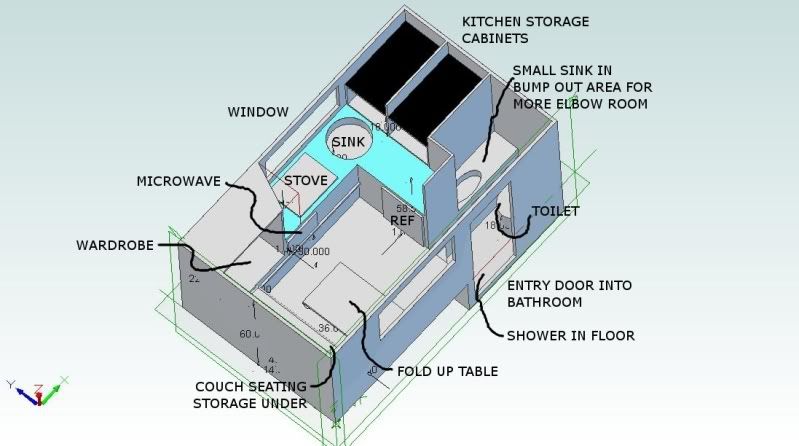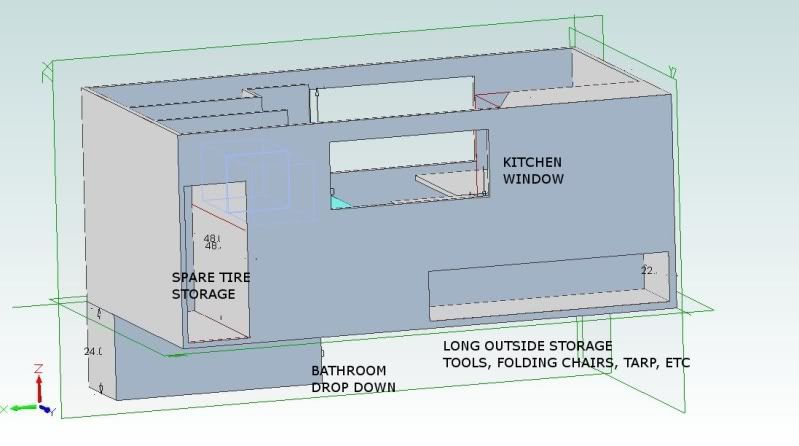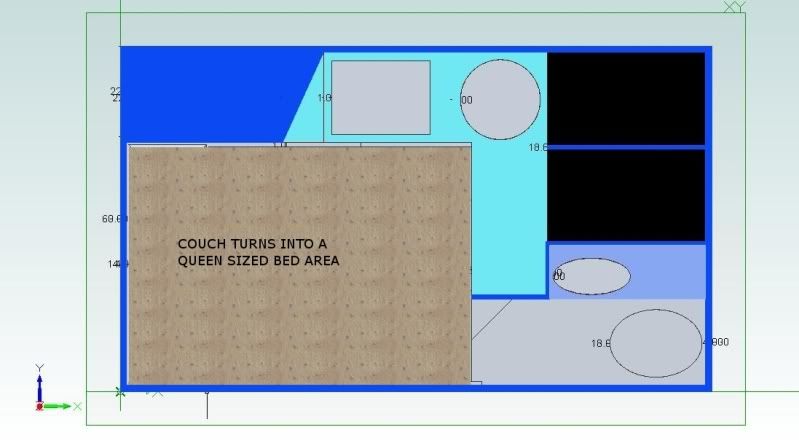I haven't stopped thinking about this one....its a big daunting project that will cost a lot of money, but I still think about it. Unimog campers are not cheap.
This new design I have been working on was in an effort to see how comfortable of a camper I could fit inside a low height fixed shell. The shell on this camper is only 5' tall and would not stick that far above the cab of the Unimog. The shell is 7' wide and 12' long. It was designed to fit on an L37 wheelbase unimog and preserve the departure angle.
I kept the drop down bathroom/entry idea. I like that this provides a decreased step in height along with a full standing height area in the bathroom. The floor of the bathroom/entry doubles as a shower pan. So even with the short camper height, you still get an area to stand up and stretch even when trapped in the camper in bad weather.
I tried to minimize the weight at the rear of the camper. The only weight behind the rear tires is the couch/fold up bed, and a clothes wardrobe. The long outside storage compartment would have any heavy items stored as far forward as practical. The spare tire is also at the front of the camper to keep weight forward. There is also a 75 gallon water tank between the spare tire and kitchen area. All the plumbing ( hot water exchanger and espar ) will be under the kitchen sink.
In general, this design is suppose to be built as light as possible. The frame of the camper would be nidacore/aluminum with the interior structure built our of something like epoxy coated 1/4" marine plywood. The counter top would be aluminum with a welded in sink. No drawers would be used, instead light weight perforated aluminum baskets would be used with elastic cord keepers. A net or fabric curtain would be used over the wardrobe. There would only be a privacy curtain ( shower curtain ) between the main camper section and bathroom/entry. Weight would be saved in all parts when possible. Ideally all the dividing walls, cabinet bottoms, etc....could all be water jet cut with lighting holes and features.
To use the kitchen you would install a removable stool in the floor. This would allow comfortable use of the kitchen for cooking and dishes.
The bed folds out from the couch area covering the entire open floor area in the main area of the camper. It should take less than a minute to change from couch to bed. All the bedding would be stored under the couch for easy access and use. This is also very light material and can be stored at the rear of the camper.
I think keeping the camper as light as practical would open up an entirely new world in off-road performance for the Unimog chassis. Most of the weight in this design is as far forward as possible. The water tank, spare tire, kitchen, and bathroom are all ahead of the rear wheels and basically sitting on the floor of the 'bed' of the original unimog design.
Thoughts?









